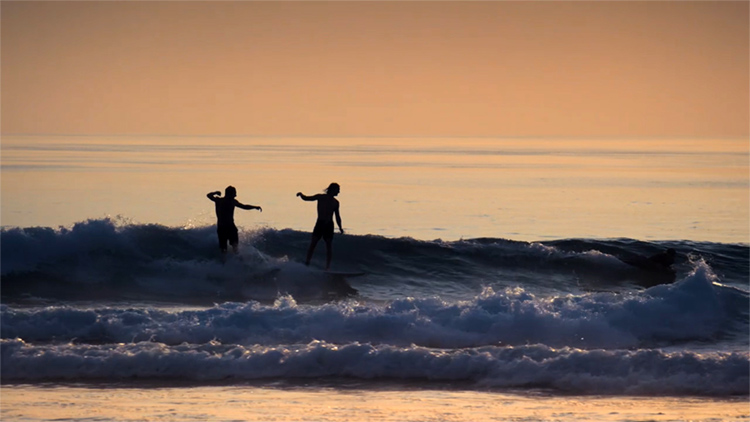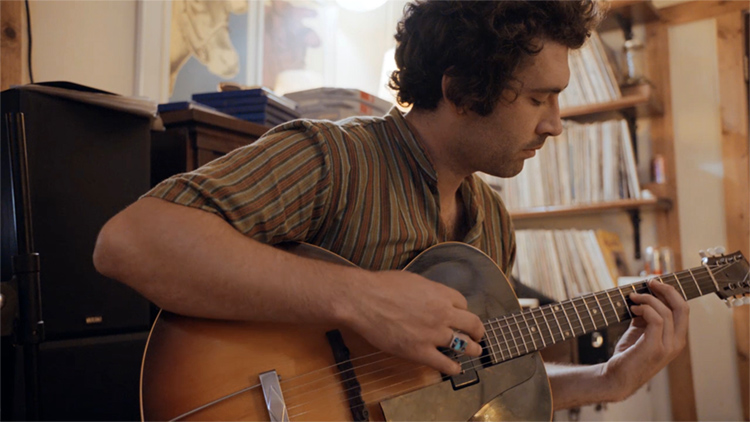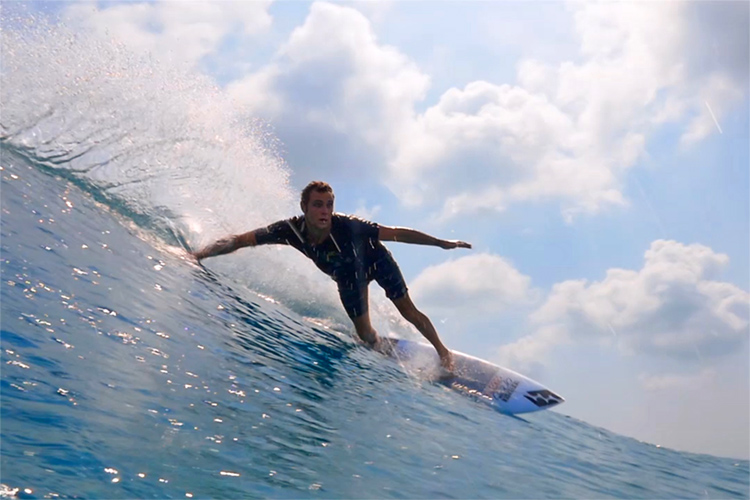"Self Discovery for Social Survival" is a collaborative film between record label Mexican Summer and New York-based surf and outdoor brand Pilgrim Surf + Supply.
Surfers in the film include seven-time world champion Stephanie Gilmore, Creed McTaggart, Ryan Burch and more.
The film is accompanied by an original soundtrack out June 14 on Mexican Summer, featuring music by Allah Las, Connan Mockasin, Andrew VanWyngarden of MGMT, and Peaking Lights, and additional tracks by Dungen and Jefre Cantu-Ledesma.
SDSS was filmed in Mexico, the Maldives, and Iceland in three separate vignettes.
The musicians and pro-surfers embark on a journey that combines a symbiotic relationship between music and the waves, the environment, and local culture.
Since the genre's birth in the early 1950s, the surf movie has involved a synthesis of image and music.
Reinventing the Surf Movie Genre
Typically, these two key ingredients are sourced separately and mixed together only after the visual fact.
"Self Discovery for Social Survival" subverts this recipe.
Just like the osmotic waves that run through the film, the visuals and music of SDSS co-exist and permeate as one to reinvent and reimagine what surf movies can look, sound, and feel like.
"The idea was to send surfers and musicians off on these trips together," explains director and Pilgrim proprietor Chris Gentile.
"Get them out there amongst it - in the surf, in the afterglow of the surf, talking story at dinner, just all the great stuff that happens on a surf trip."
"Then, right after their trips, the musicians jump into the studio and compose based on their experiences. With their hair still wet, so to speak."

Three Separate Vignettes
SDSS works as a triptych - narrated by the recently late, legendary avant-garde filmmaker Jonas Mekas, a voice holding as much depth as the ocean itself.
The story to which the narration belongs to breaks up the almost entirely dialogue-less film and was scribed by Jamie Brisick, a professional surfer turned writer.
Traveling from Mexico to the Maldives and finally to Iceland with world-renowned, award-winning surfers from all over the world, SDSS captures the international, interweaving, and universal language of surf culture.
In Mexico, Los Angeles psych ensemble Allah Las joins surf historians and professional surfers from the US (Ryan Burch, Richard Kenvin, Devon Howard, CJ Nelson, Karina Rozunko, and Corey Colapinto) and Australia (Ellis Ericson) in sipping tequila, hanging ten across winding waves, and stumbling upon a super-secret surf break (the location of which they will never reveal).
Walking up and down the boards as effortlessly as spooning bread to butter, the free surfers, longboard stylists, and single fin riders playfully merge with Robert Beatty and Bailey Elder's animations that accompany the film while still holding their own.
Meanwhile, the Allah Las return to their home studio to set off to record with their analog equipment, this time ripping on the sound waves.
The five songs by Allah Las on the soundtrack, entirely instrumental and all aligned by different variations of fruit jams, lay the foundation of a classic surf aesthetic: tingling guitars, sporadic yet attentive percussion, and rolling bass lines.
In the second vignette, remotely held in the southern atolls of the Maldives Islands, Los Angeles electronic pop dub duo Peaking Lights (Aaron Coyes and Indra Dunis) carve their mark on the waves with a group of progressive young Australian surfers (Ellis Ericson, Beau Foster, Ari Browne, Creed McTaggart).
While the gentle yet upbeat electronic echoes of Peaking Lights, reminiscent of Broadcast or Arthur Russell, bounce across the screen, breathtaking aerial views of wipeouts and vast underwater ocean shots take flight.
Leaving bobbing heads treading ocean waters that carry the whitest shade of blue, Peaking Lights move on land to their home studio to delve into their two contributions to SDSS, "Mirror In The Sky" and "Hold On."
A near-silent symphony ending in Iceland, kiwi neo-psych musician Connan Mockasin and MGMT's Andrew VanWyngarden encounter slate grey waves, active volcanoes, euphoric hot springs, massive glaciers, and wild mushrooms.

Joining them, surfers from Australia (Stephanie Gilmore, Beau Foster, as well as legendary surf director/filmmaker Andrew Kidman), the US (Kassia Meador), France (Lee-Ann Curren), and Iceland (Heidar Logi) cover themselves in thick wetsuits to protect them from the blistering cold - a striking contrast to their Californian cousins.
Surrounded by alien landscapes, dramatically darker in tone and movement than other scenes in the film, SDSS emphasizes a side to surf that avoids stereotypes.
Heading from the Northern Lights to the north of Brooklyn, Mockasin and VanWyngarden finally settle into Gary's Electric (Mexican Summer's in-house studio), exhorting a surrealistic emerald ending to mark a unique display of the neo-surf film.
Breaking Standards
In addition to the Allah Las, Peaking Lights, Mockasin, and Vanwyngarden's contributions, Mexican Summer stable staples Dungen and Jefre Cantu-Ledesma provide additional music and sound design to elevate the soundtrack to unknowable strata.
"I wanted to see a surf film that's not rooted in nostalgia but is very respectful of, and is almost a nod to that past," says Keith Abrahamsson, head A&R at Mexican Summer and the film's music supervisor.
SDSS is not afraid to tightrope the guidelines surf is usually associated with.
"The experimental spirit is alive and well in the film," says Gentile.
"The artist on the trip is reacting and responding to the moment we're having. It's about relinquishing control and taking creative risks."
"Self Discovery for Social Survival" premieres in LA at The Palace Theatre on June 15 with a live score by Connan Mockasin, Andrew VanWyngarden of MGMT, and Allah Las.
The film will be available worldwide later this year.
